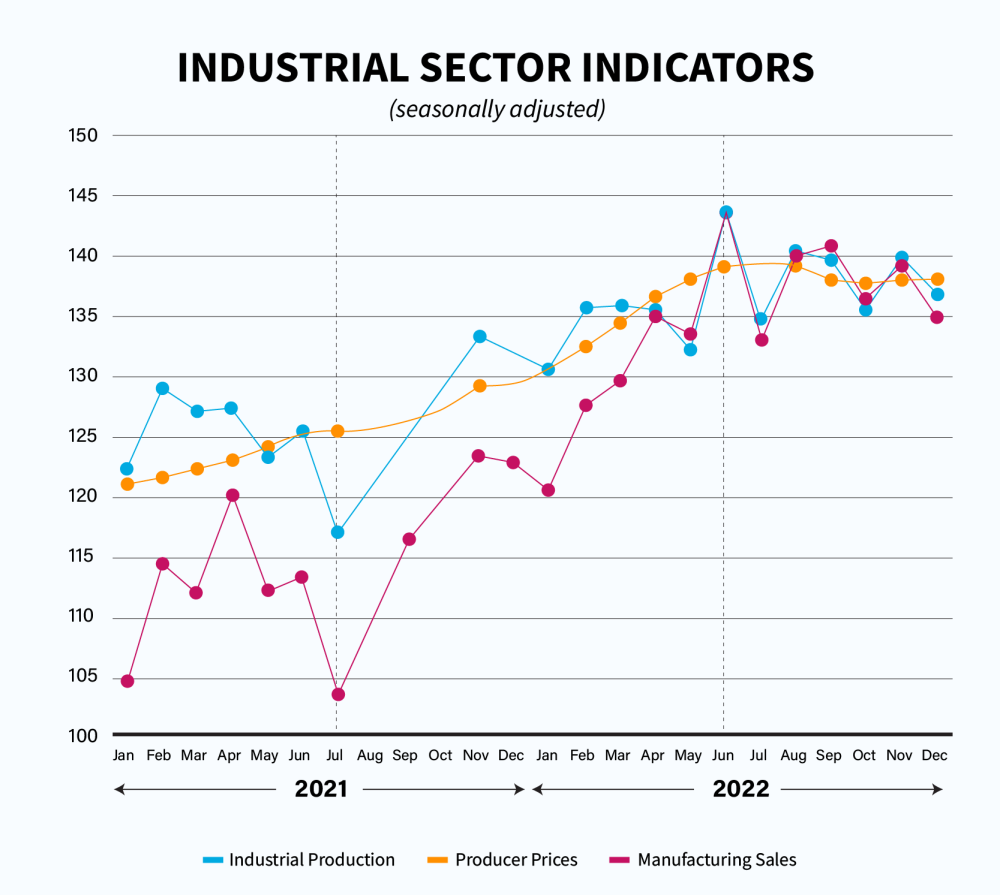FEBRUARY 8 —At the end of November, just after the general elections, we wrote that the most urgent and delicate problem for the unity government is how to manage the transition from a booming but unsustainable economy, to a more moderate and realistic rate of growth.
The final 4Q GDP data will be released on Friday and we expect to see a slowdown of the economy after four quarters of skyrocketing performance. Unless the data is revised, which is a real possibility, average growth for 2022 will be around nine per cent.
This is the type of growth experienced in the 1990s and almost touched in 2000. Since then, the underlying potential rate of growth has decreased to around 4.5 per cent due to the structural changes caused by the lockdowns. Simply put, the exceptional economic growth last year was double the actual potential growth of the economy.
So the GDP data on Friday will help us to understand the next phase of economic growth and the transition we will experience. We expect negative growth of one per cent in Q4 compared to Q3 and annual growth of 8.4 per cent compared to last year. This will give overall growth of around 8.1 per cent for the full year.
Just as the Malaysian economy was overshooting the potential and spending all the available bullets, from the exceptional government stimulus packages to the EPF withdrawals, the more advanced economies experienced a clear deceleration and now they are heading towards a slower growth phase.
Malaysia has not decoupled from the world economy and is still exposed to the risk of a technical recession due to the weakness in the international environment.
Nonetheless the recent global growth forecast of the World Bank at 1.7 per cent suggests that it is possible for 2023 to end with positive growth on average but at around half of the potential.
The flow of recent data in Malaysia confirms that this transition is already in place and suggests a quite drastic change in the overall economic scenario. The pause in the OPR by Bank Negara is also consistent with a transitional phase of the economy.
The data on industrial production, producer prices and sales in the manufacturing sector shows that the transition is already evident in the manufacturing sector.

One year of sustained expansion from July 2021 to June 2022 was followed by a period of relative stagnation in the last six months with a contraction of five per cent from the peak in industrial production.
The cyclical slowdown is confirmed by the 0.8 per cent contraction of producer prices from the peak and a contraction of sales in December.
The manufacturing sector data also shows how the labour market is lagging behind the path of production, producer prices and sales. Employment increased by 3.8 per cent year-on-year in the last six months and salaries and wages per worker increased by two per cent year-on-year.
The combined effects of slower output, higher costs and lower revenues will reduce profit margins which will lead sooner or later to a new period of reductions in costs, inventories and workers.
In other words, there are clear signs that the industrial sector cycle will turn downwards.
When we compare export-oriented and domestic-oriented production, we see that export industries contracted by 1.3 per cent in Q4 compared to Q3 in 2022.
Plastic, rubber and machinery manufacturing were typically leading the cycle. On the other side, domestic-oriented industries expanded by 5.4 per cent in the same period which follows the rise in consumer spending.
Separately, the recent international trade data confirms the external pressures that will affect the Q4 GDP data. Seasonally adjusted data shows a contraction of 9.3 per cent for export volume and 9.8 per cent for import volume in Q4 compared to Q3.
The change in the scenario is drastic and will continue to have an impact in the next few months.
Set against this will be the positive impact of lower inflation on the back of lower oil prices and the reopening of China which will spur regional growth. These will absorb part of the negative effects of a wider global slowdown.
The problem for the government is quite complex and its short-term policy bullets are more limited and possibly less effective in the coming phase.
Against this backdrop, the government should try to redirect economic and social policy toward the long-term to create a more efficient setting for the economy instead of the reactive policies with huge, expensive and extraordinary measures of the past.
This time may not be possible to completely counterbalance the negative trend of the international economy and Malaysia may simply import recession.
So resilience must be built into economic policy to address the cost of living, support domestic investment and growth and provide more effective support for the weakest parts of the population.
We have to be ready to see at least one quarter of contraction in Q4 and possibly another in the next months until the wind changes and as that unfolds, the sailing has to be based on a new and alternative course.
* Professor Paolo Casadio is an economist at HELP University and Professor Geoffrey Williams is an economist at the Malaysia University of Science and Technology. The views expressed are those of the writers.
**This is the personal opinion of the writer or publication and does not necessarily represent the views of Malay Mail.





















